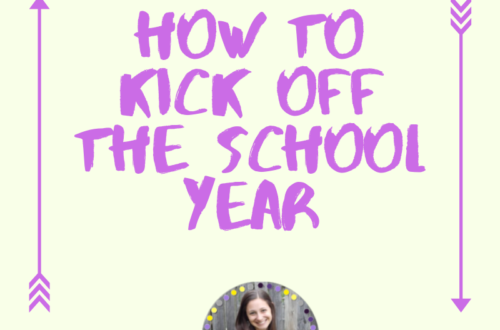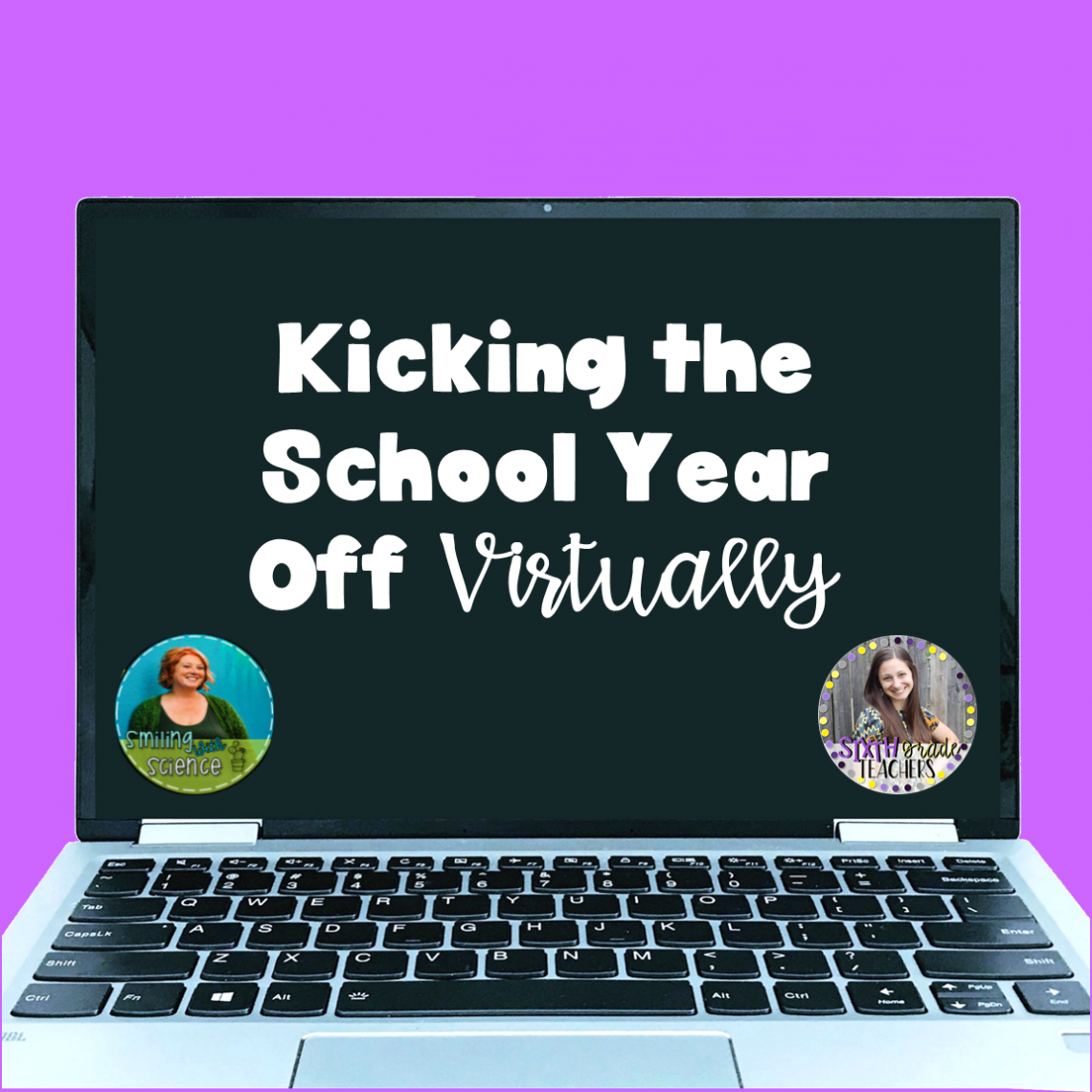
Kicking the School Year Off Virtually
Hi everybody! Jamie @sixthgradeteachers and Dana @smilingwithscience have teamed up this month to bring you some helpful tips since they have both been receiving questions about how to make this year successful from the start!
It’s mid-August and some of you have already started school. Some of you are still waiting for a plan (including Jamie). The biggest question we have been asked recently is how to build relationships with students virtually. In this post, we hope to share some first week of school ideas that revolve around relationship building and might work for you whether you are going back to school in person, hybrid model, or virtually.
Positive Attitude
So, how do we kick off the school year on the right foot? First of all, come in with a positive attitude. We know this is very difficult right now with so many unknowns and a global pandemic, but positivity could not be more important. Keep this in mind when you may be surrounded by negativity. You do not want to get sucked into that. It will not help anybody. Take a deep breath. Inhale. Exhale. This will be a challenging year, no doubt, but just remember that this school year is a fresh start for you and your incoming students. This year can and will be different with the right mindset and putting the right things into place from the start.
First Week of School Goals
Regardless of which model is used for back to school, the first three goals are the same. You will notice we added a new goal of teaching technology.
- Classroom Community Building
- Relationship Building
- Teaching Routines and Procedures
- Teaching Technology
Taking the first week to focus on these first four goals rather than diving right into the curriculum has made a world of difference in our classrooms. The classroom community feels like a family. Relationships are stronger. Routines and procedures are like well-oiled machines. Establishing and building a positive and conducive learning classroom community starts day one. Students need to feel valued, respected, loved, and supported for learning to occur.
We added teaching technology to the list of goals because if you are going back to school virtually or using a hybrid model, students will need to know how to utilize your school or district’s platform, your teacher website, etc. If you are going back to school full time in person, it’s not a bad idea to expose students to technology in the event that you do go virtual (which we learned in the spring could happen suddenly). Our best advice would be to embed the teaching of technology while building a classroom community, relationships, and teaching routines and procedures. It sounds overwhelming but can be done.
Classroom Community Building
Icebreakers
Students go around the room or take turns virtually sharing their name and something about themselves. The next student has to say their own name, something about him/her, and repeat what the previous student said. This continues until the teacher is the last to go. By the end of the first day, you usually know all of your students’ names! If you are doing this virtually, you could turn this into a “show and tell”. Give students a couple of minutes to find something that best represents themselves in their house. It would be like a scavenger hunt. Dana has done this multiple times and it has helped with not only getting the students more comfortable with sharing information but also getting them up and moving instead of sitting stagnant in front of a computer screen. As students take turns sharing, they have to explain the significance of the object they picked.
Jamie created a Digital Back to School Activities Resource that features icebreakers and introductory activities that are the perfect way to start the school year off via distance/remote learning. These activities are designed for you to get to know your students and for students to get to know one another (even virtually). The activities include: Would You Rather, Flipgrid Introduction, Numbers About Me, Goal Getter, This or That, 2 Truths and 1 Lie, Pictures About Me, Dear Future Self, and Find Someone Who. Grab this resource here.

Classroom Values
One activity that Jamie loves doing every year is a post-it note activity where she gets students’ feedback, such as classroom values, goals, what students need to be successful, etc. She will set up chart paper and sticky notes around the room, then break students into groups. Students will move around the room (or to different breakout rooms) answering the questions on post-it notes, and once finished they debrief by going over some of the top answers. This sets the tone and allows students to have a voice in our classroom. TIP: Jamie color-coded her post-it notes by class period. This can also be done digitally! Grab the activity here.
Dana gets students’ feedback virtually through a student survey on Google Forms. It is so important for students to feel that they have a say in what is happening in the classroom. You do not want this to become a classroom power struggle. Instead, it is teamwork so that everybody can be successful.

Group Work and Games
Incorporate group work intro your instruction by using games such as Quizlet Live. Utilize Zoom breakout rooms, pre-assigning students into groups to give them the opportunity to interact and collaborate. Change up the groups every few weeks or as needed. Tip: Once you start seeing who is becoming friendlier with each other, switch it up so that students can be pushed out of their comfort zone. It is very easy to always pick your best friends as partners!
Greeting Students
This seems obvious but greeting students by their preferred name as they enter the physical or virtual classroom is huge. It sets the tone for the class period, showing students you are excited they are here. If you are teaching virtually, encourage students to unmute themselves to say hello back. You saying their name could be the ONLY time that your students hear their name all day, make sure that it is positive. We don’t want students to associate hearing their name with being in trouble or getting corrected.
Show Students YOU
Students love learning more about us as teachers and our worlds. Often, students (especially younger ones) don’t realize we have lives outside of teaching. Show them your world at home. Show them your world at school. Talk about your kids, family, pets, vacations, etc. This will help spark connections with students that you might not know existed. No matter what your year looks like, create About Me slides! Have fun with it.
Relationship Building
Get to Know You
Relationship building is key from day one. Get to know your students. They want you to know all about them. To do this, we created a Get to Know You Survey in Google forms where students answer basic questions, like name, nickname, siblings, pets, favorite things, and sports/activities they are involved in. Jamie also asks students to set a goal for class and explain what they will need from her in order to be successful. The final question is always open-ended, allowing students to share any other information they would like us to know. Jamie loves having a digital copy rather than a hard copy with this information that she can reference at any time. Click here to edit the Get to Know You Survey.
Dana also does a Getting to Know Your Child Survey for her parents/guardians. It is so important that not only are you building relationships with the students in front of you, but also with the adults that you are going to be interacting with. You do not want the only time that you talk to them to be when their child is being corrected. Make positive phone calls home. Use the survey that they filled out to know what works for them at home to keep their student motivated, or how you can help each other instead of butting heads. It is imperative that you are on the same team!

Get to Know Me
As much as students want you to get to know them, they also want to get to know you! To do this, Jamie created a quiz in Google forms that asks multiple-choice questions about her. Students get to know a little about her family, hobbies, and favorites. They will receive immediate feedback on their answers to know whether they were right or wrong. The last three questions are open-ended with no answer key included. She asks students to observe her and my classroom and record observations. The following question asks students to draw conclusions about our classroom and her personality. Finally, Jamie allows students to ask any questions they want to know about her. This is all done in real-time. After giving students a certain amount of time to complete, she will have students share what they learned about her, observations, conclusions, and ask anything else they want to know. Click here to edit the Get to Know Me Quiz.

Positive Notes
We love writing positive notes to my students to send a quick message of encouragement, build strong rapport, and strengthen relationships. Even middle schoolers love receiving positive notes! You could mail the notes home, send them electronically, or give to students in person. Click here to grab personalized notes where you can insert your Bitmoji/Avatar or here to grab cactus themed notes.
Feel free to also use Dana’s code smilingscience for www.littlebirdiepapers.com. The code it will give you a discount on any notepad that you purchase! Dana uses this personalized notepad to drop notes on student’s desks and also for sending positive notes home to parents.
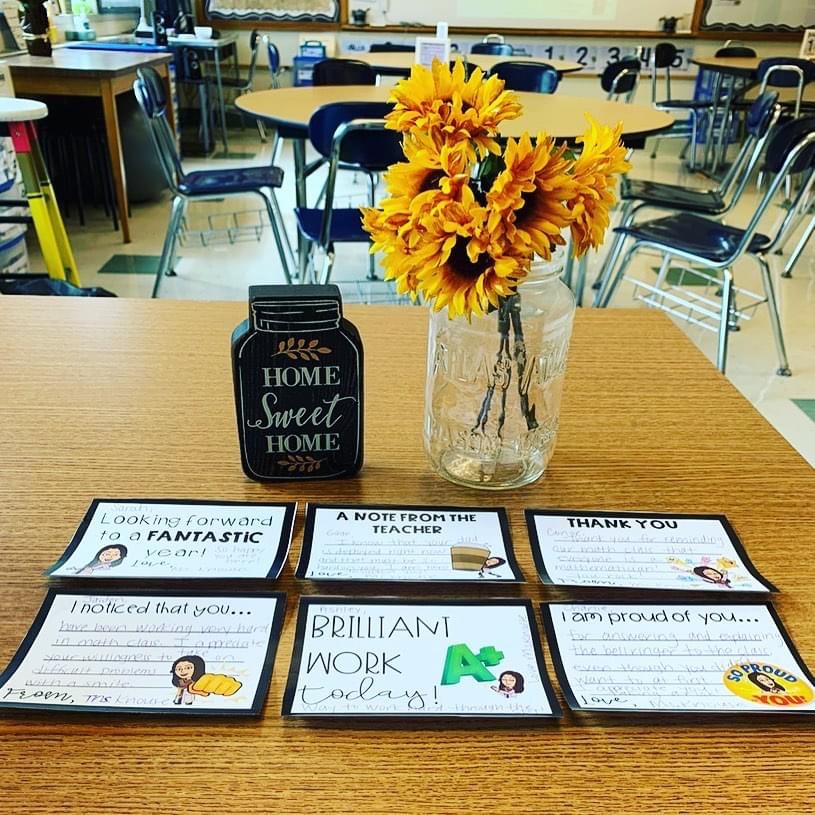
Check-Ins
Checking in with students on a regular basis is so important to give students a voice, get feedback, and learn more about them. It can be something as simple as share your Pits and Peaks (lows and highs) or Glows and Grows (what you feel that you’ve done great and what you feel that you can do better at) verbally or taking a Google forms survey style check-in. Click here to edit a sample Check-In.
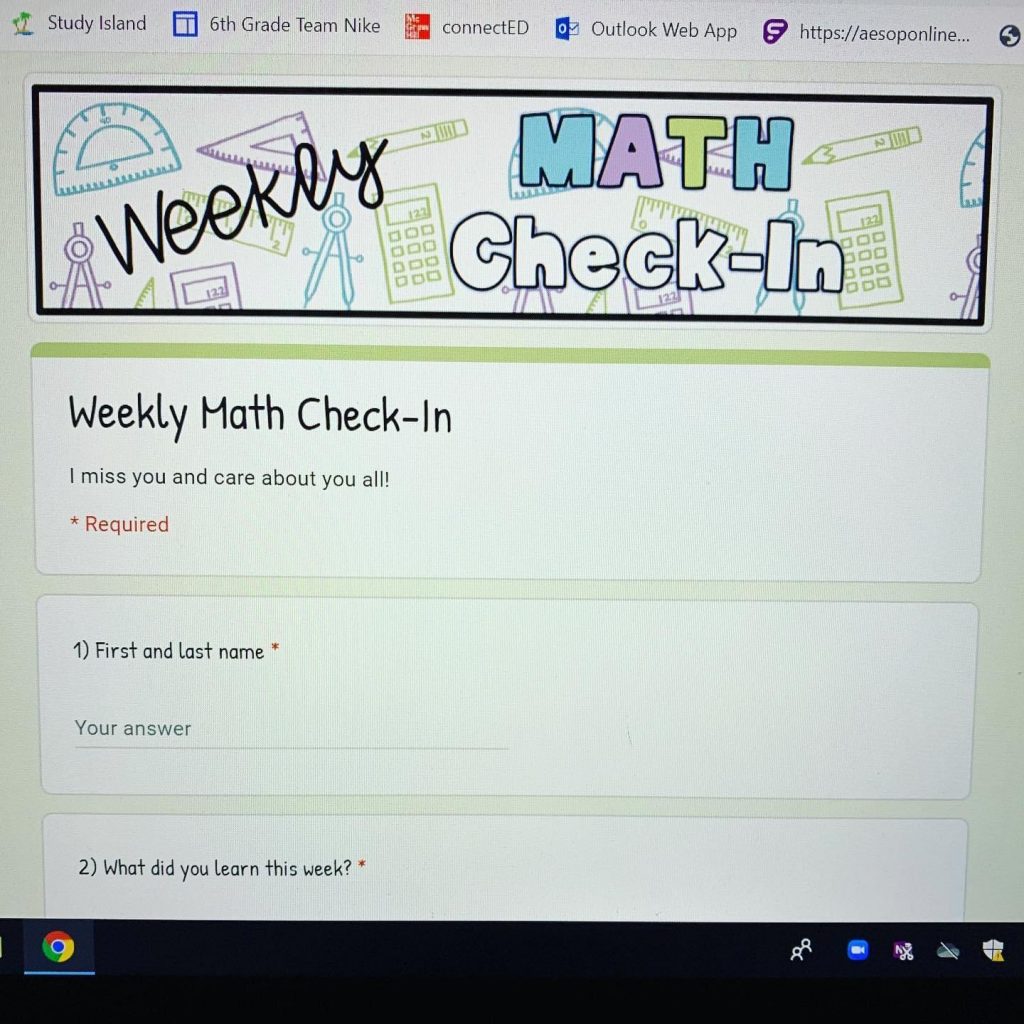
Office Hours
Offer office hours where students can meet with you individually or in a small group setting. Encourage students to take advantage of this time to ask questions, work one-on-one with you, and get to know you better! Yes, we know that our time is very busy during the day, but even 5 minutes can make all the difference.
Teaching Routines and Procedures
Classroom Routines and Procedures
Jamie and Dana typically go over their syllabus with students but with a fun little twist; We quiz them on it! Jamie created a quiz in Google Forms which tests students on policies and procedures, including questions on my homework policy, work completion policy, cheating policy, entering and exit procedures, etc. This keeps students on their toes and engaged while learning about how our classroom operates. If you are going back to school virtually, we would add more questions about your virtual classroom routines and procedures. Click here to edit Jamie’s Classroom Policies and Procedures Quiz.
Tip: Have students work with you on classroom policies. Even if you know what you want to do and how to do it, give them some ownership so that your students feel as though they are creating the classroom dynamic. This will also help with students who are not holding up their end of the policies and procedures because you can say “we came up with this together” instead of it coming off as “you’re not following MY rules.”

Practice and Model
Practice the routines and procedures, especially with utilizing technology. Practice entering the classroom quietly, muting yourself, raising your hand to speak, unmuting yourself, etc. You will need to do a lot of modeling the first few weeks until students have mastered the routines and procedures and be prepared to revisit as needed. Perhaps have some “tech experts” in each class that can help diagnose and solve their peers’ technology issues as they arise.
Class Value Meme Activity
Creating, demonstrating, and recognizing class values is a routine/procedure in my classroom as we want students to be embodying these values on a regular basis. Using Jamie’s digital post-it note activity that she mentioned earlier helps to generate ideas. Another idea would be to have students create a Class Value Meme. They can create it in google, share it with you, and then you can compile the values into a presentation. Students can vote on the top ten (or however many you decide). Grab the Class Value Meme.
Establishing Group Work Procedures
Establishing group work procedures is so important as different teachers have different expectations for what group work might look like and/or sound like. Jamie was introduced to the 100 Activity, created by Sara Van Der Werf a few years ago and it was so fun and easy to use in her math class! The activity was updated with different versions. While it is meant to be used in class, we think it could still be used virtually. Break students into groups of 3-5 (this could be in a break out room or you could share the activity with individual groups of students) and students work together to complete a task in 3 minutes.
Students will complete the task at least a few more times, striving to do better each time. As students are working, we snap pictures of groups working well together. If you are doing this virtually, you could possibly take pictures. Discuss patterns and how groups worked together to be successful. This leads to a quick-write where students respond to the question “what does great work in math class look like?” We share out and create an anchor chart that has all of our ideas and is constantly referenced throughout the year. Jamie also prints the pictures she took and puts them on the chart. See her full blog post here and grab the resources needed.
Fun fact: Dana does this in her science class every year but did not know that it had a name until writing this blog with Jamie!
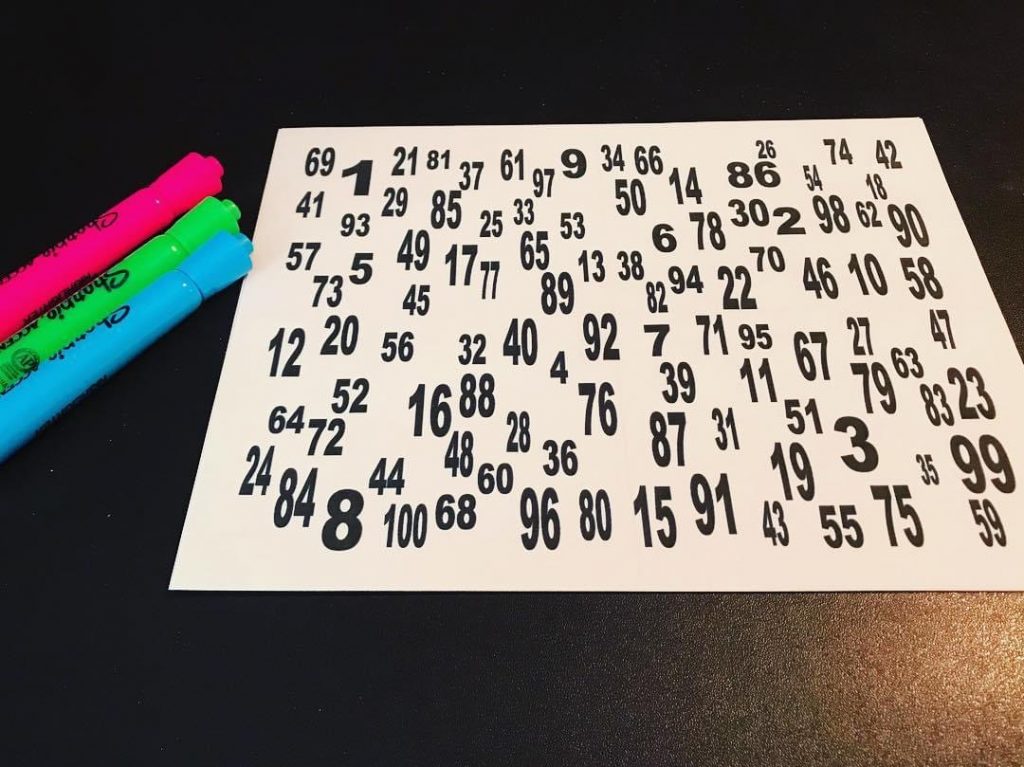
Be Consistent
Consistency is key. Students are creatures of habit. They crave structure and organizational systems that give them a sense of safety and predictability. Students are watching our every move, interaction with students, etc. Be consistent with how you treat students and the plans you put in place for assisting students. If someone gets “special treatment”, students notice. They see this as unfair and some will most likely act out. In middle school, expectations are black and white; middle schoolers do not see any gray area. In elementary school, expectations may seem to have more push and pull, but students still want the structure and rules to fall back on. Being consistent ensures that all students know your expectations and the consequences for not meeting those expectations.
Being consistent can sometimes be tough. We have both perceived ourselves to be consistent but then students may point out an instance where we were not. In Jamie’s quarterly check-ins with students, she will ask if they feel everyone is being treated equally and fairly in her classroom. Constantly re-evaluating your teaching practice is necessary to guarantee that you are being consistent and fair in the eyes of your students.
Dana does an end of year survey for her classes including questions about how the year went but most importantly asking, “How can I be a better teacher?” Yes, this is a very scary question to ask but we receive crucial feedback that helps us in the long run, even when we don’t see it ourselves.
Concluding Thoughts
This is going to be a difficult school year for everyone, but we are here to support each other. Remember your why- the students. We can do this! If you have other ideas for building relationships or creating a classroom community virtually, please share below!


